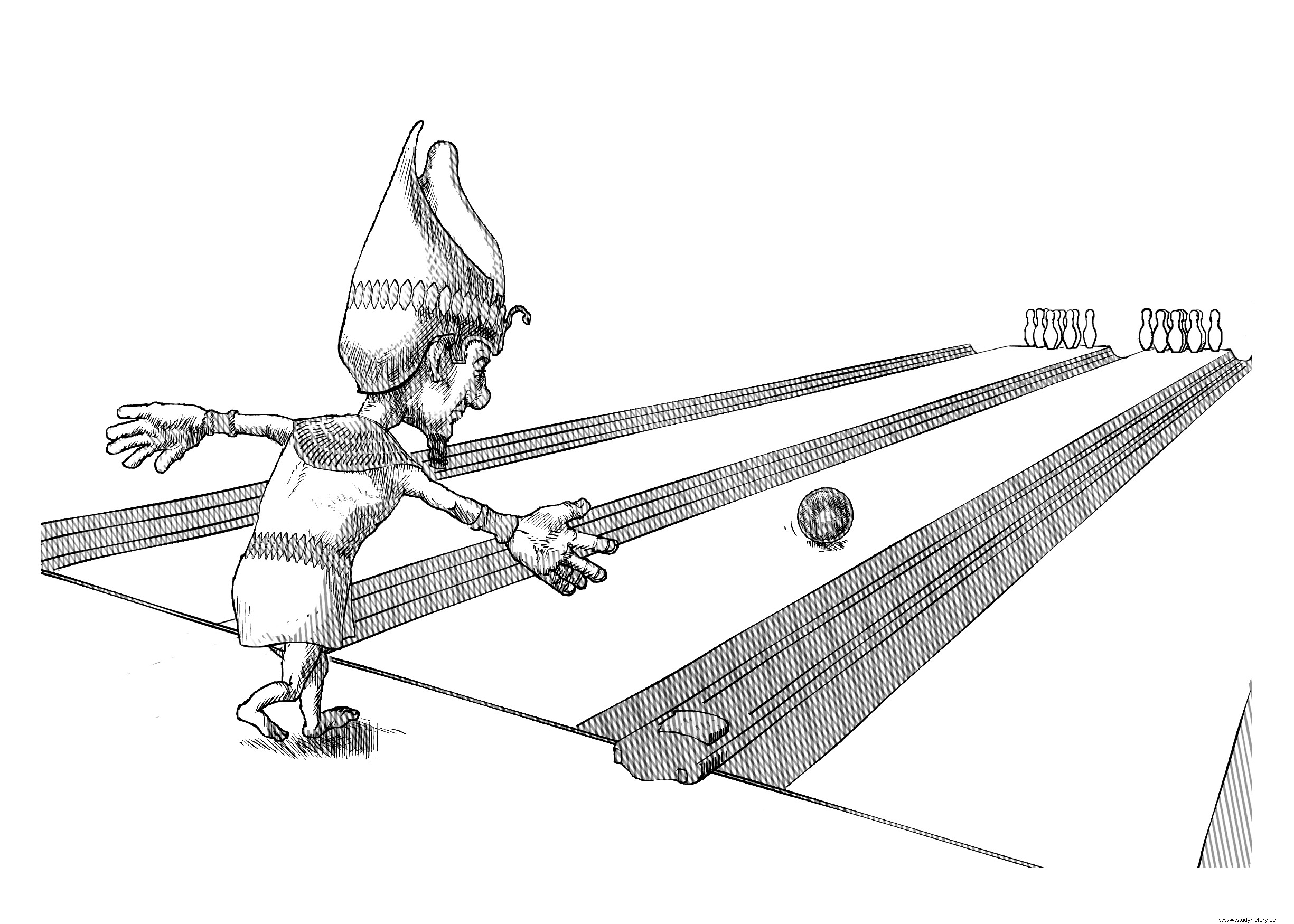If we talk about hitting an object with a stone ball, the origin of the game of bowling would go back to... no idea. But if we talk about an enclosure enabled to throw some balls through a lane, then we can place it in Ancient Egypt.
At the end of the 19th century, the archaeologist Flinders Petrie he worked in a cemetery in Naqada, a city on the bank of the Nile, and in one of the tombs he found a set of stone balls and nine pots of equal size. The set is dated more than 5000 years ago. Would they be for bowling?

Thanks to the discoveries of archaeologists from the University of Pisa (Italy) in excavations south of Cairo, in the Narmoutheos settlement, what we could call a bowling alley was discovered. The room was part of a structure, perhaps a residential building, dating from Roman times, specifically between the 2nd and 3rd centuries. It is a large room in which there is a lane about 4 meters long, 20 centimeters wide and 10 centimeters deep with a hole in the center, and under the hole a terracotta jar partially filled with fine sand. Although no remains of changing sandals have been found, balls of two sizes were found:one that was perfectly adjusted to roll down the lane and a smaller one that fit in the hole.

Drawing on imagination, the researcher Edda Bresciani She dared to conjecture how the game could be:two players stood on either side of the lane, one trying to get the small ball into the hole -which could be easily retrieved from the pot- and the other trying to avoid it with the big one. Each player would take turns throwing the smaller ball, which determined the winner of the "point." Obviously, the winner of the "game" would be the one who had pocketed the small ball the most times.
Bowling with bowling and petanque technique.
